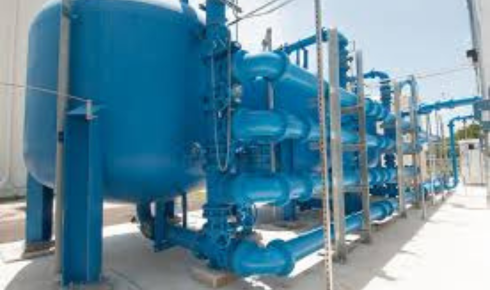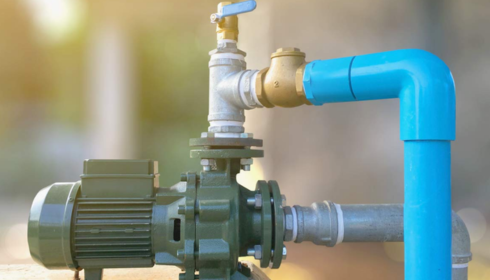When the Water Turns Against You: Understanding and Tackling Arsenic in Texas Water

If you’ve lived in Texas long enough, you probably know how fiercely independent its people are — the land, the weather, even the water seems to have a mind of its own. But sometimes, what flows from your tap can hold more than just the taste of the Lone Star State. It can hold danger — invisible, tasteless, odorless. That danger? arsenic in Texas water.
Most of us don’t think twice before filling a glass or brewing our morning coffee. After all, if the water’s clear and cold, how bad can it be? But arsenic doesn’t care about appearances. It’s a natural element, found deep in the earth’s crust, and in many parts of Texas — from the Panhandle to the Hill Country — it seeps into groundwater, quietly accumulating in wells and municipal supplies.
The Hidden Story Behind Texas Tap Water
Arsenic in groundwater isn’t some distant environmental issue. It’s personal. Studies have shown that many Texas counties have groundwater arsenic levels above the EPA’s safety limit of 10 parts per billion (ppb). That might sound tiny, almost trivial, but the effects of long-term exposure are anything but.
Chronic arsenic consumption has been linked to several serious health conditions — including cancer, cardiovascular disease, and developmental problems in children. What makes it so concerning is how subtle the symptoms are at first. You won’t smell it. You won’t taste it. You might not even suspect anything’s wrong until years later.
Texas, with its vast network of private wells, faces an even bigger challenge. Unlike municipal systems that are required to monitor water quality, private well owners are largely responsible for testing and maintaining their own water safety. Many simply don’t — not out of neglect, but out of unawareness.
Why Texas Is Especially at Risk
It’s not that Texas is doing something wrong — it’s just geology and geography conspiring together. Arsenic occurs naturally in rocks and soil, and when groundwater levels shift (due to droughts, agriculture, or overpumping), those arsenic-laden minerals can dissolve and contaminate nearby aquifers.
Combine that with Texas’ long history of well use, rural independence, and sprawling land area, and you’ve got a recipe for uneven water safety. In some areas, arsenic levels fluctuate seasonally. In others, they remain persistently high. It’s not always predictable, and that’s what makes it unsettling.
So what can you do about it? That’s where technology — and awareness — make all the difference.
Filtering Out the Problem — Literally
Once you’ve tested your water (and you should, at least once a year), the next step is choosing the right treatment solution. Not every filter is built to handle heavy metals like arsenic. Many off-the-shelf pitcher filters or basic carbon systems won’t make a dent.
You need something specifically designed to tackle the problem head-on — an arsenic water filter Texas residents can depend on. These filters use advanced processes such as reverse osmosis, oxidation, or adsorption (with specialized media like activated alumina or iron oxide) to remove arsenic molecules before they reach your glass.
Some systems work for the whole house, protecting not just your drinking water but also the water you use for cooking and bathing. Others are installed at a single tap, offering a more affordable entry point. The key is professional guidance. A local expert can test your water, explain your options, and help you choose a solution that matches your home’s water chemistry and your budget.
The Science of Safety (Without the Jargon)
Let’s simplify it for a moment. Removing arsenic isn’t about fancy buzzwords — it’s about chemistry doing its quiet work. When you install a filter that’s specifically designed to remove arsenic from water, you’re essentially setting up a molecular trap.
The system forces water through membranes or media that bind arsenic particles while letting pure water pass through. Depending on the filter, this can remove 95–99% of the contamination. For something you can’t even see, that’s a big win.
But filters, like cars, need maintenance. It’s not “set it and forget it.” You’ll need to replace cartridges or monitor system performance over time. The good news? Once it’s done right, you can stop worrying about what’s lurking in your water glass and focus on what matters — staying hydrated and healthy.
Beyond Just Clean Water — Peace of Mind
There’s something deeply reassuring about knowing your family’s water is safe. It’s one of those invisible comforts you don’t notice until it’s gone. Texans, in particular, have a deep relationship with their land and resources — water included. So taking control of your home’s water quality isn’t just a safety measure; it’s an act of stewardship.
Think of it this way: you’d never ignore a gas leak or a faulty electrical line. Contaminated water is no different. It’s a slow, silent hazard that deserves the same urgency.
And while state agencies continue to monitor and improve public systems, the reality is that much of the responsibility lies at the household level — especially in rural or semi-rural areas. The power to protect your health starts right under your own roof.
A Small Step Toward a Bigger Solution
Water problems can feel overwhelming — like something only scientists or policy makers can fix. But in truth, it starts with small, personal action. Testing your water. Asking questions. Investing in reliable filtration. Sharing information with neighbors who may not even realize their well could be affected.
The more people understand what arsenic contamination means, the faster Texas can move toward a cleaner, safer water future. Every family that takes action adds to that ripple effect — transforming awareness into resilience.
Final Thoughts
We often take water for granted until something goes wrong. But protecting your home’s water isn’t about fear — it’s about empowerment. Once you know what’s in it, you can do something about it. Once you act, you’re not just reacting — you’re leading.
So maybe the next time you pour a glass of water in your Texas kitchen, pause for a second. Think about where it came from, what it passed through, and how a few smart steps can make it safer.
Because in a place as bold and self-reliant as Texas, clean water isn’t just a necessity — it’s a choice worth making, one filter at a time.






